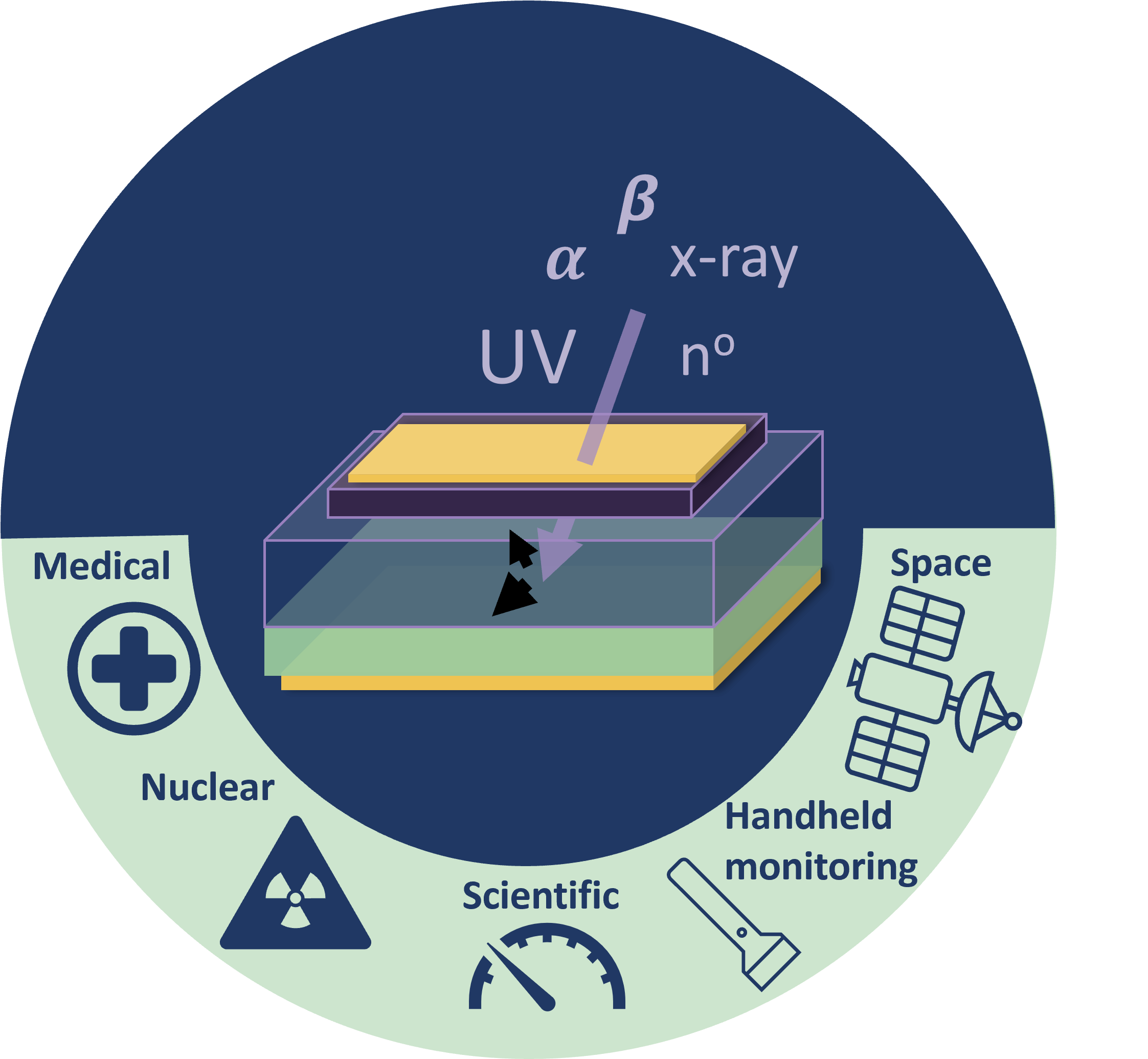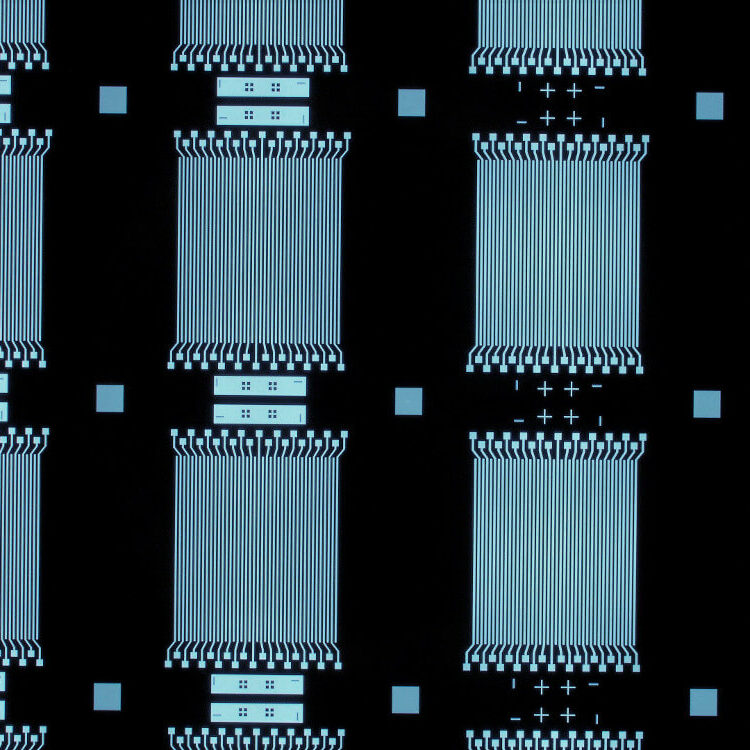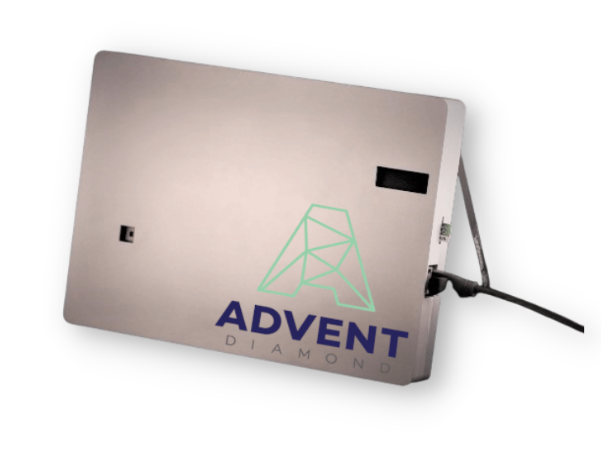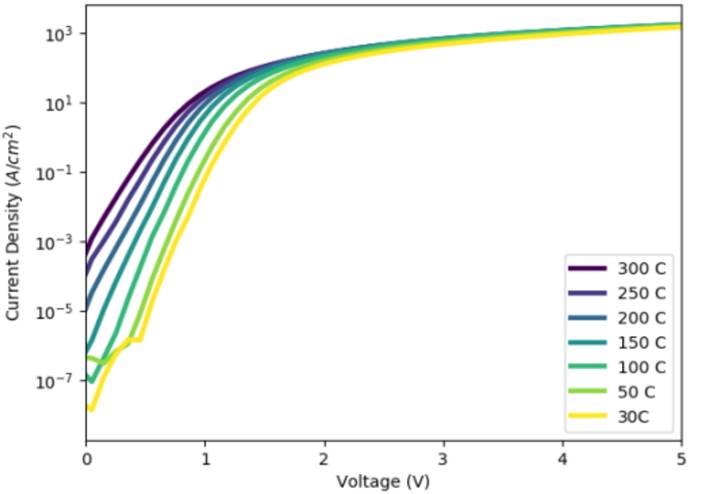Our diamond growth technology
Diamond electronics cannot be made with the same techniques used to make silicon-based components, which has traditionally limited the development of diamond technology. Fortunately, a number of breakthroughs by Advent Diamond have overcome these difficulties and led to:
- A patented method to grow single-crystal phosphorous-doped diamond on preferred substrates, making Advent Diamond the first US and presently only company with this technology. This is a particularly significant breakthrough, as phosphorous is the only relatively shallow n-type dopant of diamond
- Single-crystal and polycrystalline boron-doped diamond layer growth on large areas. We are among the first US companies to have this capability.
- Semiconducting-grade intrinsic diamond layers grown with impurity concentrations below the detection limit (as measured with Secondary Ion Mass Spectrometry).
- Defect-mitigation growth techniques protected by trade secrets
Based on this core technology, we develop diamond-based components and offer custom electronic diamond wafers and fabrication services.

Diamond component fabrication
We use state-of-the-art technology, years of hard-won knowledge and trade secrets to turn diamond wafers into components. Advent Diamond capabilities include:
- Component modeling and design
- Preparing diamond surfaces with a mix of plasma- and chemical-based treatments
- Cleanroom processing: etching, lithography, metalization
- Characterization: microscopy, profilometry, ellipsometry, Hall, XRD, XPS, electrical measurements, and more

DIODE-STRUCTURED DIAMOND DETECTORS
Advent Diamond is developing new types of radiation detectors for the defense, commercial, and scientific markets. Our detectors are based upon layers of doped and intrinsic semiconducting diamond to form diamond-based diode structures. These detectors offer a solar-blind window-free solution for energetic particle radiation. With a large noise-suppressing bandgap and superior radiation hardness, diamond detectors can be used in a variety of environments and applications. Advent Diamond is developing detectors for ultraviolet light, alpha, beta, energetic charged particle, neutron, x-ray, and proton radiation.
Products under development
PARTICLE DETECTORS
Our particle detectors are based upon semiconducting diamond. Our unique capabilities to make doped diamond structures enable a number of particle detector designs which can be tuned to each specific application. We are developing detectors for:
- X-ray beam monitor
- Alpha particles
- Beta particles
- Protons and ions
- Neutrons
- Ultraviolet light
Advantages of diamond-based particle detectors include solar blindness, low noise, reduced system complexity, and compatibility with harsh environments. We hold a patent on a unique approach to detectors which enable superior measurement stability, even under extreme conditions.

X-ray beam monitor
Our in-beam transparent beam monitor offers unprecedented beam imaging and intensity measurements for x-ray sources at synchrotrons and other facilities.
Advent Diamond is developing an imaging x-ray beam monitor with single-crystal diamond as the x-ray sensor. Transparency to >5keV x-ray beams is achieved by using thin diamond.
-
Detectors are based on diode-structured diamond or metal-insulator-metal structures with 20-50 micron total diamond thickness
-
Active areas are 2.5mmx2.5mm with 48x48 pixels or 5mmx5mm with 96x96 pixels
-
Easy-to-use system with one plug for data and power via power over ethernet
-
Plug-and-play control and readout software
-
Integrates with EPICS or ImageJ
-
Titanium/Platinum/Gold metallization or custom metallization available
-
Dynamic range > 106 from ~nA-mA, noise floor <50 pA
-
Imaging detector on a card under development for installing in compact spaces


NEXT GENERATION ELECTRONIC COMPONENTS
Advent Diamond is the only U.S.-based company with the capability to produce diamond electronic components using p-type, n-type and intrinsic diamond. Our proprietary material and manufacturing methods enable components such as diodes and transistors with: compact volume and rapid switching speeds, the ability to handle large currents in a small footprint, the ability to withstand harsh environments, ambient operating temperatures of up to 400 °C and radiation hardness. These features enable miniaturization and systems cost reduction.
Our team is currently working on bringing diamond diodes to market, and we anticipate working towards high-power diamond transistors and power modules in the near future, with the belief that this technology will be revolutionary for a variety of industries.


Diodes
Advent Diamond is currently developing a line of diodes for receiver protector circuits for RF applications such as radar systems. Our diodes demonstrate current densities of >1kA/cm2, translating to miniaturized power diodes for simultaneous high frequency and high power specifications not met by conventional diodes.
The promising specifications of these diodes are enabled by diamond’s extreme material properties, including:
- The highest figures of merit for high power and frequency applications
- The largest thermal conductivity of any material. In fact, thermal-grade diamond is often used as a heat sink material for other semiconductor technologies, but diamond components can act as their own heat sink.
- Superior performance at elevated temperatures
Conventional diodes are susceptible to catastrophic thermal runaway, which occurs when Joule heating increases forward resistance and power dissipation in the diode leading to overheating and failure. However, diamond diodes exhibit reduced resistance with increasing temperatures, up to 300C, increasing their ability to handle large power densities and reducing the need for thermal management.
Our electronic component development roadmap includes: diodes for radar receiver-protector circuits, freewheeling diodes for power modules, diamond transistors, all-diamond power modules (EV charging stations, solid-state transformers, electric aircrafts & drones), space-qualified diamond components, and components for electric motor control systems.